Other Fun Exercises
I n a period of weeks after starting a fitness program—usually 12 to 24—the dedicated person will probably be ready to branch out into a wide variety of more strenuous activities. More diverse types of exercises are likely to seem attractive. A good fitness program should be preparing the beginner for locomotor sports— those that require the whole body to be in motion—and for brachiation activities, which require movement of the upper body, mainly the arms.
The program, after all, has the goal of maximizing body peformance in all areas of life. In branching out, consideration should be given to those activities that provide enjoyment and at the same time meet physical, social, recreational, and other needs. The activities should not be purely seasonal or participation will be part-time. It may be necessary to mix types of activities so as to ensure year-round participation.
Special training programs in calisthenics may provide the answer, as may a daily walking hour, or dancing. Other people may want to keep it simple—and turn to ancillary exercises that can be performed alone. Still others might opt for yoga or some advanced strength builder exercises. There are several factors to bear in mind as you plan the best way to expand your fitness horizons:
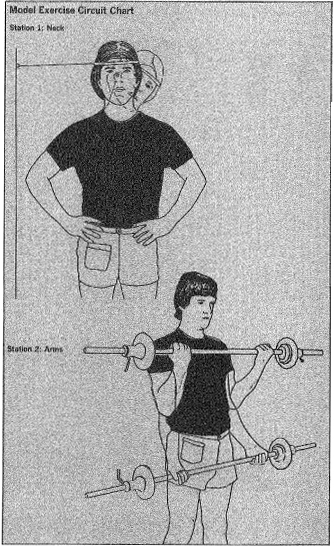
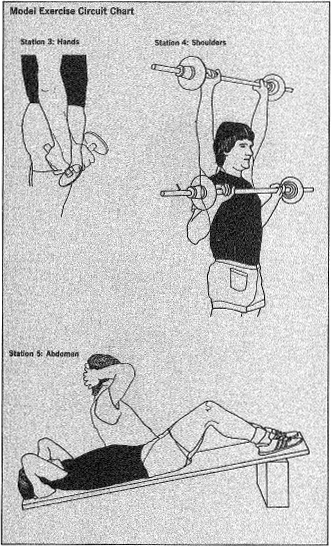
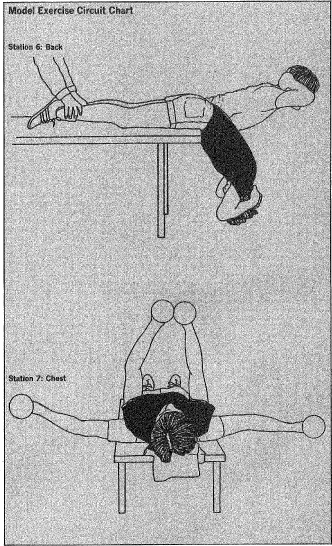
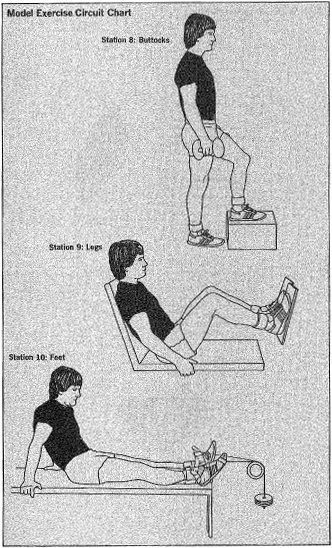
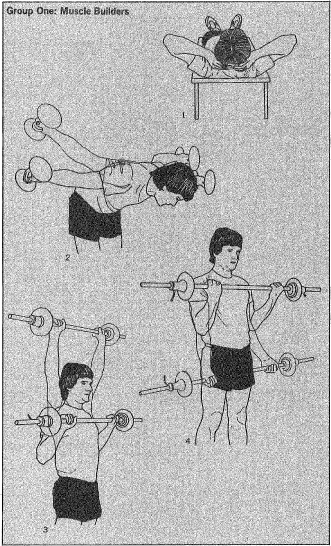
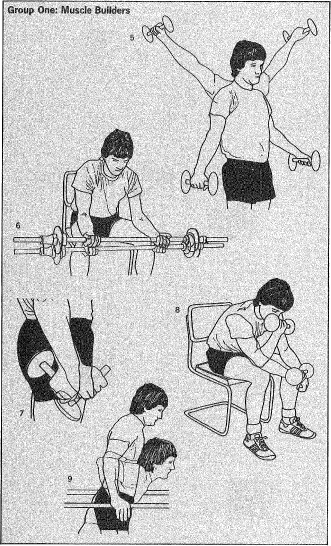
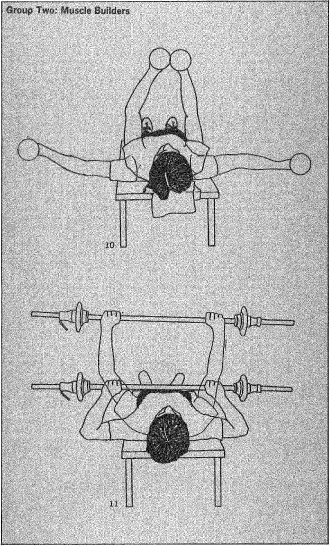
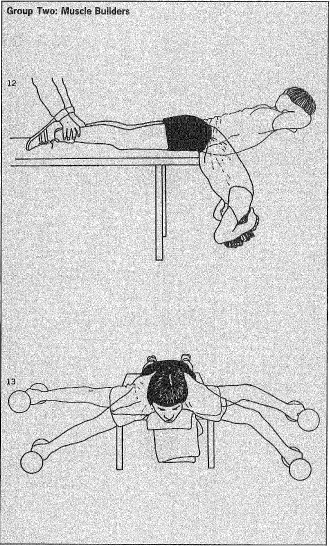
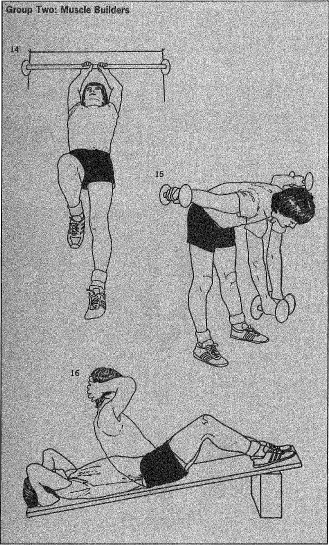
Walking
Americans love to walk, fitness experts say. But many people don't get the most from the walking they do because they don't approach it as exercise.
Walking does qualify as exercise, however—one of the best. To ensure that you get the benefits that walking can bring, a seven-part procedure is suggested.
1. Picture walking as a separate fitness activity. Learn to take your own pulse. Then calculate what your target pulse rate per minute should be for your age. That usually means 70 to 85 percent of your maximum rate (220 minus your age in years).
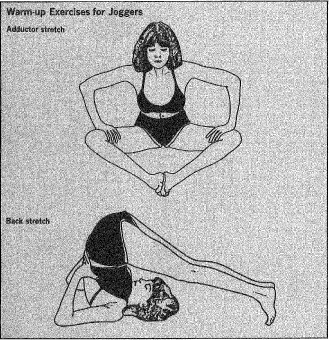
2. Buy a pair of comfortable running shoes.
3. Design a starter program for your own use. Promise yourself, for example, that you will walk 20 minutes four days a week. Raise that target to 25 minutes a day, four days, and then increase the level by increments of five minutes. A good final target might be 45 minutes four days a week.
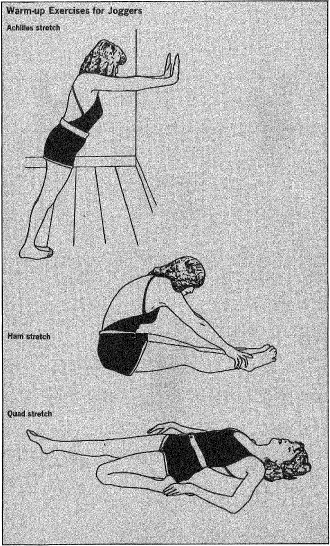
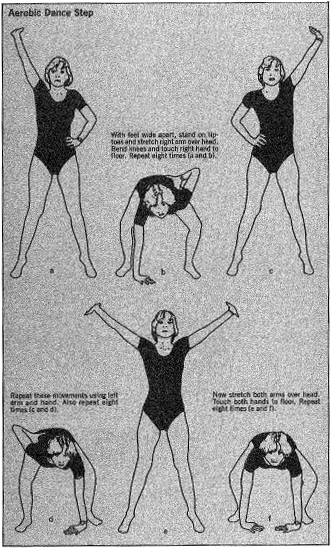
4. Take your own pulse every day and keep a record of your findings. Watch your pulse rate decline as your body becomes more efficient.
5. In walking, breathe rhythmically. Let your arms swing by your sides.
6. Use your walk as recreation even though you've planned it as a kind of independent fitness program. As you walk, notice colors, trees, buildings, people. Try not to think of work.
7. Schedule mini-walks in the mid-afternoon, when your body may be starting to drag. Walk, if possible, instead of taking the usual coffee break. You should obtain a fresh charge of energy and a clearer head.
Everybody walks, it seems. Why regard walking as exercise, then? Because walking can do almost as much for individual fitness as jogging.
There are other reasons for making walking a part of a fitness program, or for walking at every opportunity apart from the program. Walking burns up calories. Walking does not strain joints and muscles as some other exercises do. Walking can be enjoyable, as dedicated walkers have testified down through history.
Conceivably, the typical modern American could go through an entire day without taking more than 15, 20, or 50 long strides. To do so, it would only be necessary to utilize the elevators, autos, escalators, and other devices that make walking unnecessary. But for those who consider walking both fun and a learnable art, walking as exercise puts those devices into the shade.
Let's consider some of the types of walking that the individual can incorporate into his or her life.
Speedwalking
A technique of walking as fast as possible while swinging the arms back and forth, speedwalking or racewalking is rapidly gaining in popularity. The arms are used to provide rhythm and momentum. The elbows remain bent at 90-degree angles. The speedwalker, like other walkers, needs only comfortable exercise clothes and shoes. Many speedwalkers wear runners’ shoes.
Speedwalking burns up 620 to 870 calories an hour. As an exercise, it puts every muscle to work in an aerobic and circulorespiratory way. The exaggerated hip movements help firm up buttocks, thighs, and hips. The beginner should aim for three half-hour speedwalking tours a week, over that period maintaining a rate of three or four miles per hour. Leg-stretching warm-ups before starting and cool-downs at the end of the walk will help in the same ways as warm-ups and cool-downs before and after other exercise sessions.
As the speedwalker progresses, he or she can step up the walking pace to five or more miles per hour. If possible, keep records of the date, the distance walked, and the time consumed.
Interval Walking
Other approaches to walking are less strenuous, but they offer many of the advantages of speedwalking if performed regularly. Interval walking, for example, involves walking briskly for 30 seconds, then slowly for 30 more seconds. That process is continued until the walker is reasonably tired. Ideally, again, records are kept in interval and other approaches to walking.
Continuous Walking
In continuous walking the exerciser sets himself an objective and walks until he achieves it. The first time out, wisdom dictates an easy pace. On subsequent walks, perhaps every two or three days, the pace is stepped up.
Tempo Walking
In the walking format known as tempo walking, the walker moves easily for five minutes. Then he walks at top speed for one minute. The relaxed-then-rapid repetitions are continued over a set distance. Every few workouts, the rapid phase of the tempo walk should be lengthened by five seconds. The cool-down is accomplished by walking easily for five final minutes.
Long-Stride Walk
A variation on tempo, continuous, and interval walking, the long-stride walk involves what the name indicates: a period of long-stride walking that is inserted into the basic continuous, interval, or tempo walk. Walking with the longest possible strides helps in particular to condition the hips and buttocks. As a variation on the variation, the walker can insert into his walk periods of walking with short strides while the body inclines well forward.
Hill Walking
After a warm-up of five minutes of easy walking in a flat area, the hill walker sets off to mount a low hill. For best body conditioning, the uphill pace is rapid, the downhill pace moderate. Hill walking calls for discretion; the walker should not attempt too much too soon—as in every other area of fitness conditioning. Steep hills may have to be avoided at first.
Stationary Walking
Walking in place, or stationary walking, involves little more than simulated walking in which the exerciser lifts his knees as high as possible. Starting at an easy pace, he gradually “walks” faster. Stationary walking can be done according to the continuous, interval, or tempo methods.
Variety Walking
Excepting the speedwalk, the several approaches to walking can be combined and recombined to taste. One approach can be used one day, another approach the next. In this way, the exerciser injects variety into the walking phase of his fitness program.

Comment about this article, ask questions, or add new information about this topic: